Every year, Americans fill over 4 billion prescriptions. Ninety percent of them are for generic drugs. Yet, many of those generics cost far more than they should. Why? Because not all generics are created equal-and most cost-effectiveness analyses still get it wrong.
What cost-effectiveness analysis really measures
Cost-effectiveness analysis (CEA) isn’t about finding the cheapest drug. It’s about finding the one that gives you the most health for your money. The standard metric is the incremental cost-effectiveness ratio, or ICER. That’s the extra cost you pay for one extra quality-adjusted life year (QALY). If a brand-name drug costs $10,000 a year and adds 0.5 QALYs, its ICER is $20,000 per QALY. If a generic does the same thing for $500, its ICER is $1,000. That’s not just cheaper-it’s dramatically more efficient. But here’s the problem: most published studies don’t account for what happens after a patent expires. They lock in the brand’s price as the baseline, then compare it to a single generic. That’s like measuring a car’s fuel efficiency while ignoring that gas prices just dropped 40%.The real savings aren’t from brand to generic-they’re from high-cost generic to low-cost generic
The biggest savings aren’t from switching from brand to generic. They’re from switching between generics. A 2022 study in JAMA Network Open looked at the top 1,000 most prescribed generic drugs in the U.S. They found 45 of them were priced more than 15 times higher than other drugs in the same therapeutic class-drugs that worked just as well. One drug, metformin, had a version costing $120 a month while another version of the same drug cost $4. That’s not a pricing difference. That’s a market failure. The study showed that replacing those high-cost generics with lower-cost alternatives would have cut spending from $7.5 million down to just $873,711. That’s an 88% reduction. And these weren’t obscure drugs. These were used by hundreds of thousands of patients with diabetes, high blood pressure, and high cholesterol.Why do expensive generics stay on formularies?
You’d think insurers would automatically choose the cheapest option. But they don’t. Why? Because Pharmacy Benefit Managers (PBMs) profit from the gap between what they pay pharmacies and what they charge insurers. This is called “spread pricing.” If a PBM negotiates a $100 price for a generic drug with a pharmacy but only pays the insurer $60, they pocket the $40 difference. That’s fine if the drug is the cheapest option. But if a $10 version exists, and the PBM still pushes the $100 version, they’re making more money by keeping patients on the expensive one. This isn’t a glitch. It’s built into the system. And it’s why cost-effectiveness analyses that ignore PBM incentives are misleading.How generic prices drop-when they drop
When a brand drug loses its patent, the price doesn’t fall overnight. It follows a pattern:- After the first generic enters: price drops about 39%
- After two generics: price drops 54%
- After four generics: price drops 79%
- After six or more: price falls over 95% below the original brand
Therapeutic substitution: the hidden opportunity
You don’t always need to switch to the same drug. Sometimes, switching to a different drug in the same class saves even more. For example, lisinopril and hydrochlorothiazide are both used for high blood pressure. But if your patient is on a high-cost generic version of lisinopril, switching them to a low-cost generic version of hydrochlorothiazide might work just as well-and cost 20 times less. The JAMA study found that when patients switched to a different drug in the same class (therapeutic substitution), prices dropped by a median of 20.6 times. That’s bigger than switching to a cheaper version of the same drug. This isn’t about off-label use. It’s about evidence-based alternatives that meet the same clinical goal. But most formularies don’t even consider it. They treat drugs as interchangeable only if they’re chemically identical.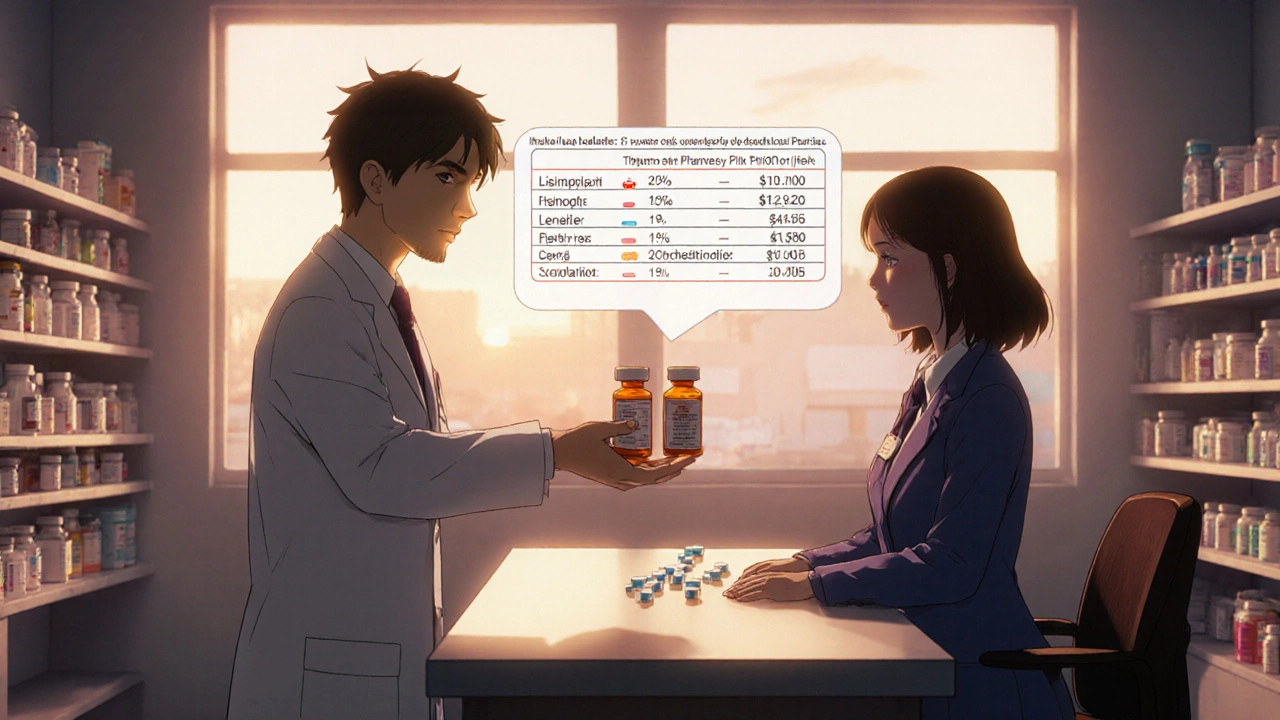
Why the system resists change
There’s a reason this isn’t fixed. The current system rewards complexity. Drug manufacturers spend millions lobbying to keep high-cost generics on formularies. PBMs make money from spread pricing. Hospitals and clinics don’t have the staff or tools to analyze pricing across hundreds of generic options. And when health technology assessment agencies do run CEAs, they often use outdated pricing data. A 2023 NIH report warned that failing to account for upcoming patent expirations “biases cost-effectiveness analysis against pharmaceutical interventions.” In other words, if you don’t model the drop in price after a patent expires, you’ll reject drugs that will soon become affordable.What needs to change
Three things:- Update CEA models to include future generic entry. Analysts need to build in expected price drops based on patent expiration dates and competitor pipelines. If a drug’s patent expires in 12 months, the model shouldn’t use today’s price-it should use the projected price after generic entry.
- Require therapeutic substitution analysis. Formularies should be required to compare not just different brands of the same drug, but all drugs in the same class. If a $5 generic works as well as a $100 generic, why is the $100 one still covered?
- Eliminate spread pricing in public programs. Medicare and Medicaid should pay pharmacies a fixed dispensing fee, not a percentage of the drug price. That removes the incentive to push expensive generics.
The bottom line
Generic drugs saved the U.S. healthcare system $1.7 trillion between 2007 and 2017. That’s real money. But we’re still leaving billions on the table because we’re not looking at the right comparisons. The value of generics isn’t just that they’re cheaper than brands. It’s that they create competition within themselves. And when we measure that competition properly-when we stop pretending prices won’t drop-we can unlock savings that make healthcare more affordable for everyone.It’s not about cutting corners. It’s about cutting waste.
What is cost-effectiveness analysis in the context of generic drugs?
Cost-effectiveness analysis (CEA) compares the cost of a generic drug to the health benefits it delivers-usually measured in quality-adjusted life years (QALYs). It helps decision-makers determine whether switching from a brand-name drug or a high-cost generic to a lower-cost alternative provides better value. The key metric is the incremental cost-effectiveness ratio (ICER), which shows how much extra cost you pay for each additional unit of health gained.
Why do some generic drugs cost so much more than others?
Price differences among generics aren’t based on quality or effectiveness-they’re driven by market dynamics. Pharmacy Benefit Managers (PBMs) often profit from the gap between what they pay pharmacies and what insurers pay, creating an incentive to keep higher-priced generics on formularies. Other factors include limited competition, complex formulations, and lack of transparency in pricing negotiations.
How much can switching to a lower-cost generic save?
A 2022 JAMA Network Open study found that replacing high-cost generics with lower-cost therapeutic alternatives saved up to 88% in spending. For example, one drug that cost $120 per month had a therapeutically equivalent alternative costing just $4. Across the top 1,000 generics studied, total spending dropped from $7.5 million to under $900,000 by making these switches.
Do cost-effectiveness analyses account for future generic price drops?
No, most don’t. A 2021 ISPOR study found that 94% of published cost-effectiveness analyses failed to model future generic entry or price declines after patent expiration. This leads to flawed decisions-like approving expensive drugs today that will soon be replaced by much cheaper versions.
What’s the difference between therapeutic substitution and generic substitution?
Generic substitution means replacing a brand-name drug with a chemically identical generic version. Therapeutic substitution means switching to a different drug in the same class that treats the same condition-like switching from one blood pressure medication to another. Therapeutic substitution often offers bigger savings because it opens up a wider pool of lower-priced options.
Why don’t insurers always choose the cheapest generic?
Insurers often rely on Pharmacy Benefit Managers (PBMs) to manage drug formularies. PBMs profit from “spread pricing”-the difference between what they charge insurers and what they pay pharmacies. If a higher-priced generic gives them a bigger spread, they may keep it on the list even when cheaper, equally effective options exist.
How can healthcare systems improve their use of cost-effectiveness analysis for generics?
They need to update their models to forecast generic price drops based on patent expirations, require analysis of therapeutic alternatives, eliminate spread pricing in public programs, and use real-time pricing data from sources like the VA and Federal Supply Schedule. Training health economists in both drug pricing and patent law is also critical.


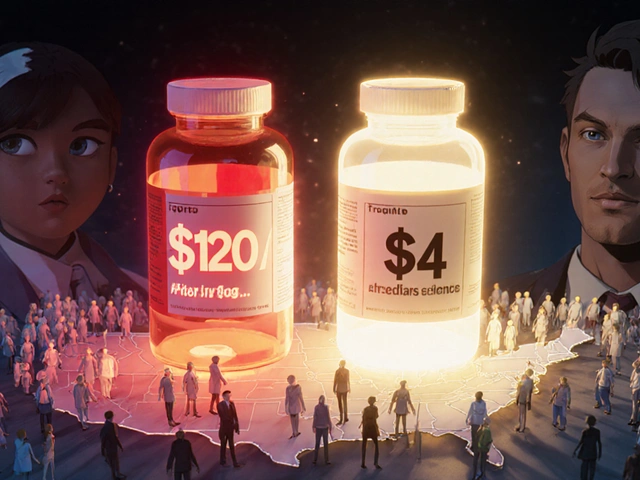
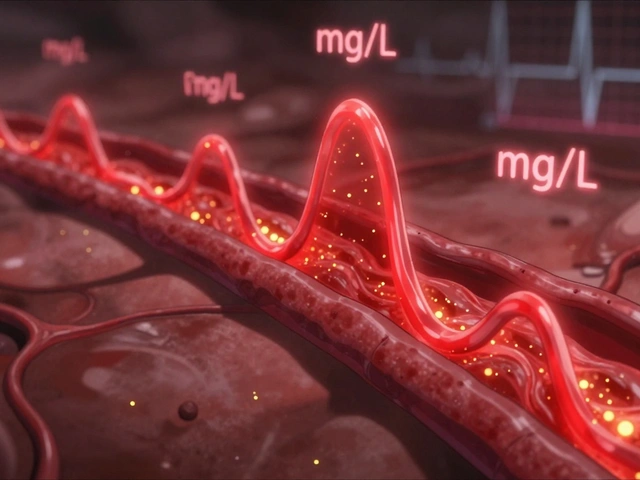

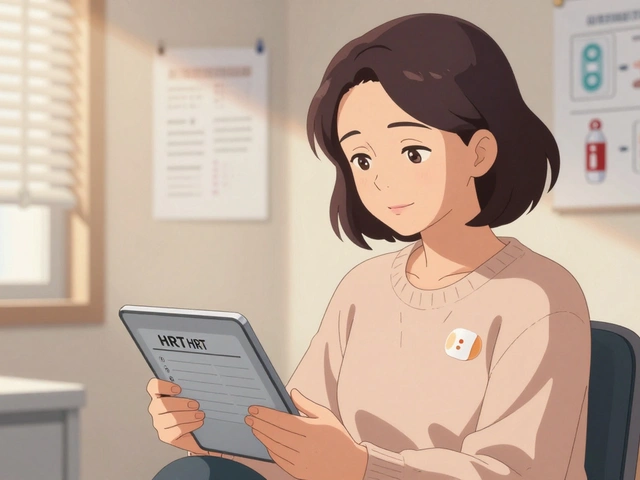
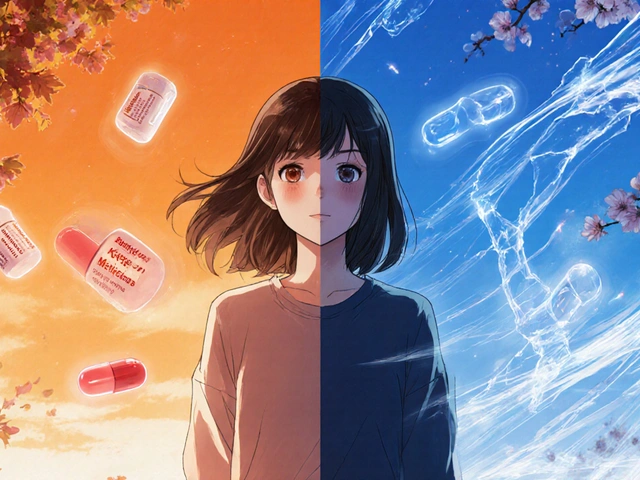


Write a comment
Your email address will be restricted to us